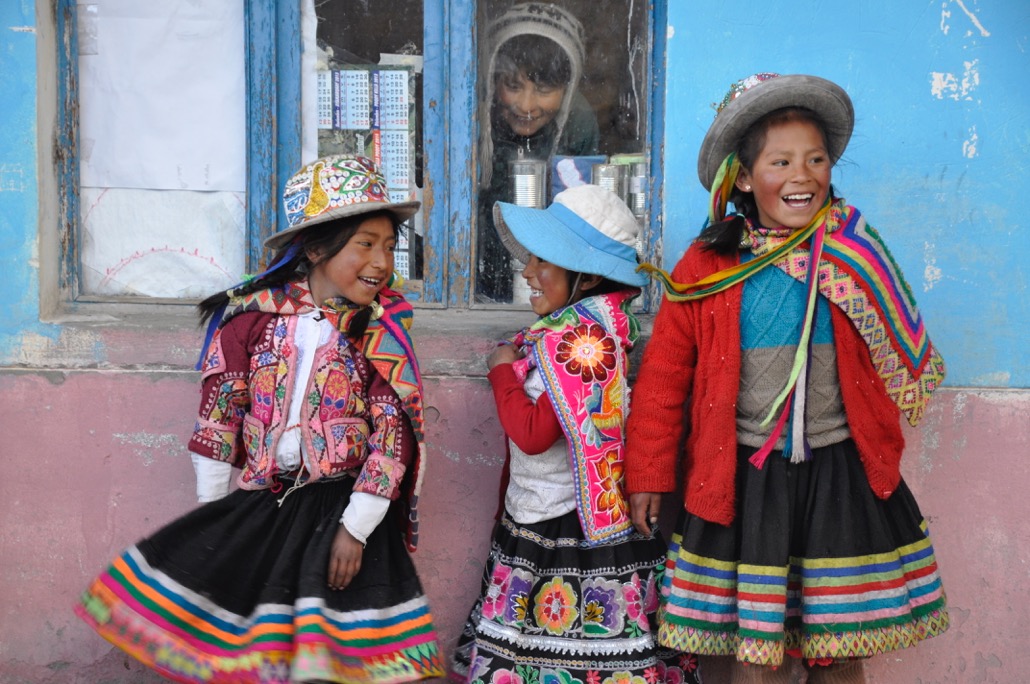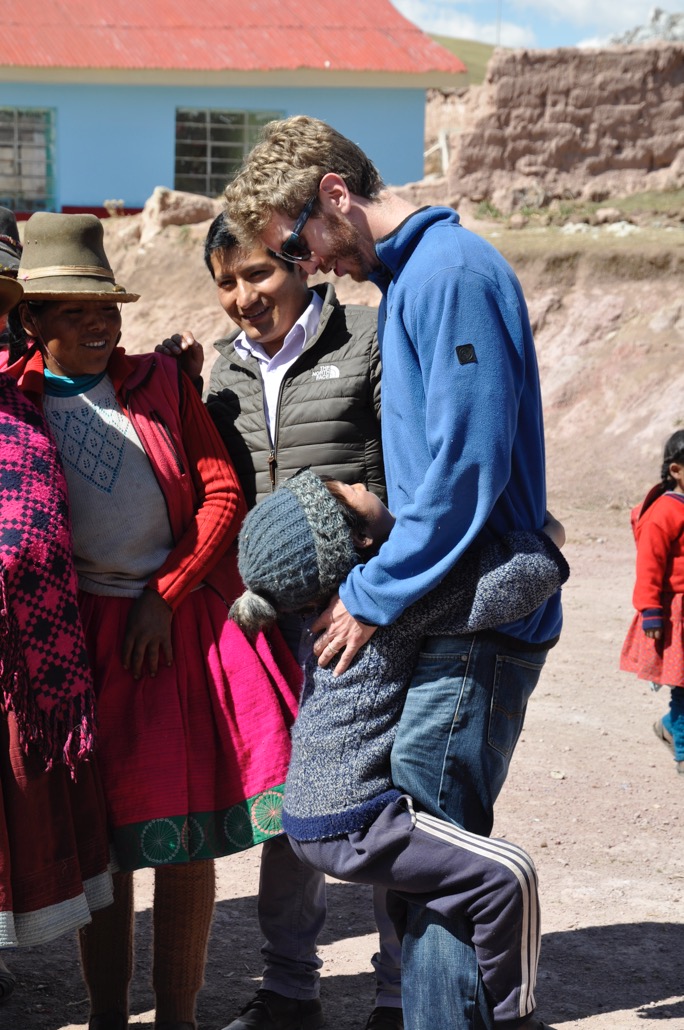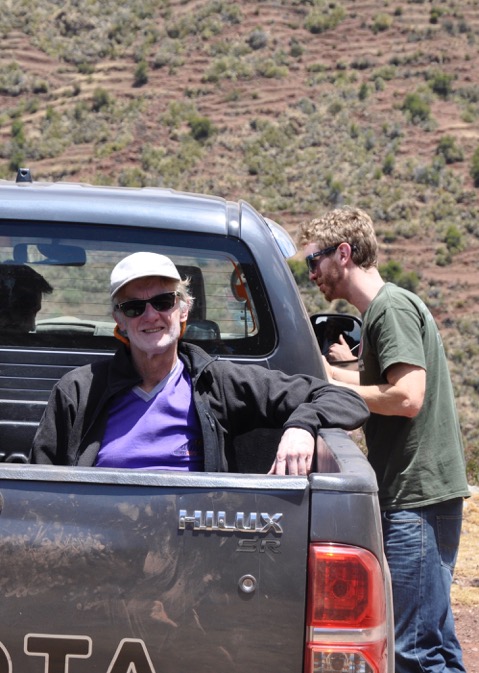
It’s that time of year again when I get to go visit as many of our projects as possible in two weeks.
This year, to try to maximize my time in the communities we decided to sleep three nights in a couple of the Bolivian jungle villages. I’m not sure what I was most daunted by, all the flights I had to take – I’m scared of flying – or spending four days away from electricity, cell service, a bathroom or shower and eating food, and drinking beverages that could so easily make my spoiled North American stomach sick. I loaded up on sleeping pills for the flights and Cipro for the jungle camping!
Of course all that happened was that I was blown away by how cute the kids are everywhere we work, how gracious and welcoming the parents are, how much our project managers Kathe and Coqui, and in Cusco, Octavio, are loved by the kids (running up to them and hugging them when we arrived), how hard our teachers are working to implement a critical thinking curriculum and how much Ian is revered by everyone, everywhere.

In the jungle region of Bolivia we are currently working in 11 communities. I visited all of them and stayed in two of them. In every community, we attended at least an hour or two of classes and held a “town hall” with the parents. We had private sessions with the teachers and usually ate with the children or the parents.
What I found was that attendance is almost always 100% because the kids love the play and project-based format. The parents, sometimes skeptical at first, because our “school” is so different from the traditional classroom where a teacher stands at the front and the kids simply copy off the board, have long since been won over and now support us fully. In places where there are “schools” they are either not functioning or not functioning well. We are the de-facto source of education. Parents everywhere said that they are so grateful that our teachers are always onsite, living in the communities Monday to Thursday throughout the school year. This year we hired a psychologist to visit the Bolivian communities and measure our psychological, non-academic impact. His report verified what we have long thought; using local culture in the lesson plans, doing regular home visits, insisting that parents help their children with “homework”, and implementing a curriculum heavy on values has created safer, happier children, better relationships within families and stronger communities.
The highlight of my time in Bolivia was indeed overnighting in the communities. Sleeping outside and waking up to the sound of the kids getting ready for school (Ok, the roosters woke me up long before dawn) was fun. It was 40 degrees Celsius and extremely humid but children all got dressed up for the Alma program and even when they were sick, attended. When it was time to leave parents and children asked us when we would return, to please continue the program, and to not forget about them.
On the way out of Bolivia Ian gave a talk at the University in Trinidad on “creative classrooms”. We were expecting 20 or 30 education students and viewed it as a recruiting opportunity. Instead the lecture hall was filled to capacity with about 150 people. He gave a highly entertaining, interactive, two-hour class on critical thinking methodologies. Every year our reputation and credibility are growing in Bolivia. In Peru we have strong support from parents and the communities, but here in Bolivia we also have the support of the University and Municipal politicians. In fact, the district has one civil servant whose full-time job is to be a liaison with Alma.
From the hot, humid jungle we took three flights to land at 12,000 feet in the cold, thin air in Peru. There we have worked for many years and there we do significantly more teacher training so the quality of our daily lessons is better than in Bolivia and I was able to see the rich pedagogy well executed and embraced by the students. I visited seven projects during my six days in Peru and I think that every one of them is functioning extremely well. We now have a number of students who have become the first in their district to graduate from high school and go on to post-secondary school.
A magic moment for me was being dragged into an old woman’s 10 square foot adobe home to eat a guinea pig with Ian and Octavio. This woman looked ancient and did not speak a word of Spanish. She talked at length in Quechua. Ian explained that she was thanking us over and over again because her daughter is now in our “Alma alumni” program in Cusco being tutored to write the University entrance exam. The mother was so grateful. She gave us not only the guinea pig meal – only eaten on very special occasions – but also hand-woven scarves and she started to cry. Two days later, I met her beautiful, bright daughter in Cusco in the apartment we rent for our four alumni girls in a place so far away and so very different from that little adobe hut where she was raised. I thought: “Really? This girl can go from such a marginalized beginning to perhaps University in a big city?” I too felt like crying.
When I returned I wrote a brief note to our Board of Directors. In summary, it said: our Program Director and Project Coordinators are doing a great job; the educational authorities recognize and respect us; and the parents and children love us. Our challenge is to find, train and keep good teachers given that our beneficiary communities are so remote, are so small, have no electricity, running water or cell service and have very tough climates. When I asked our teacher in Huadhua (13,000 feet above sea level in the Andes) what the toughest part of his job was, he smiled and said, “It’s really cold here.” It is. J
— Alan Harman, Alma Foundation Founder

